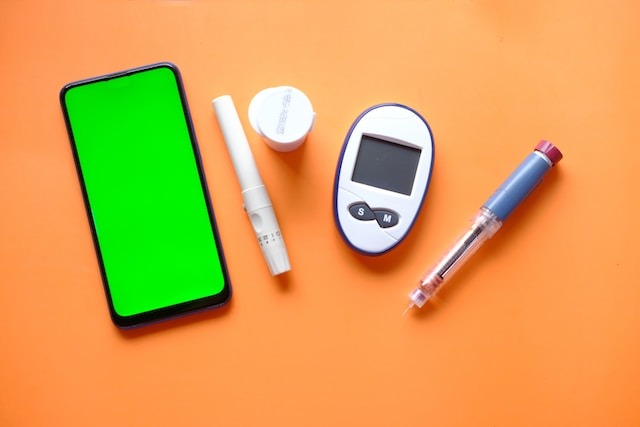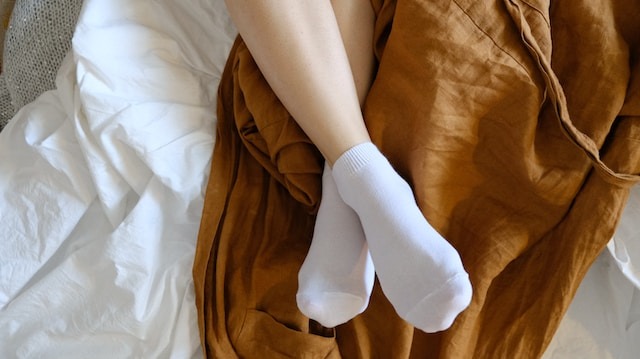If you have diabetes, it’s important to take the necessary steps to protect your health and well-being. One way of doing this is investing in quality compression stockings, which can help improve blood flow and reduce swelling in your legs. Compression stockings are especially important for people with diabetes as they can help prevent serious complications such as poor circulation and skin ulcers from occurring.
Here are some tips on why it’s so important for diabetics to invest in quality compression stockings, how they work, and where to find them. This will help you better understand why compression stockings are an essential part of any diabetic wardrobe.
What Are Compression Stockings?
Compression stockings are essentially specialized socks that apply pressure to your lower legs to help improve circulation. They come in different sizes, colors, and levels of firmness so you can find the right pair for your unique needs. They should be snug but not uncomfortably tight when wearing them. There are also specifically designed compression stockings for men that are tailored to their anatomy. This is important to keep in mind when looking for the right pair.
When worn regularly, compression stockings can help reduce swelling and discomfort in your legs. And since people with diabetes are at an increased risk of circulation problems, compression stockings can be a great way to help protect against potential complications.
Why Are Compression Stockings Essential For Diabetics?
Diabetes can affect your circulation which can lead to a variety of health issues such as poor healing and skin ulcers, especially on the feet or lower legs. Wearing compression stockings helps reduce swelling in these areas by increasing blood flow and providing supportive relief. Additionally, they act as a barrier between your skin and clothing, further reducing your risk of developing sores or ulcers due to friction. This can be especially beneficial if you have neuropathy or nerve damage caused by diabetes.
And since diabetes can cause extra sensitivity in your feet, compression stockings can also provide cushioning and help protect them from further damage. Maybe, most importantly, compression stockings can be an effective way to reduce the risk of developing potentially serious complications due to poor circulation or nerve damage.
Where to Find Quality Compression Stockings?
Finding quality compression stockings is important for ensuring your safety and comfort. The best place to look is your local pharmacy or medical supply store. You’ll want to make sure you get the right size and type of stocking for your body type, as well as the proper level of firmness for your needs. If you’re unsure which pair would be best, ask a healthcare professional who specializes in diabetes-related supplies such as certified nurse practitioners or pharmacists.
Additionally, many online retailers offer a wide selection of compression stockings at various price points. And while it’s important to find a quality pair, it doesn’t have to be expensive. This can be especially helpful if you need multiple pairs or require different sizes for each foot.
Benefits of Wearing Compression Stockings
By investing in quality compression stockings, you can experience a variety of benefits. In addition to improved circulation and reduced swelling, they also help alleviate pain and discomfort from poor circulation caused by diabetes. Furthermore, wearing them regularly helps protect your lower legs from further damage due to friction or extra sensitivity.
All in all, compression stockings are an essential part of any diabetic wardrobe and should be worn regularly for the best results. This is especially true if you’re regularly active or on your feet a lot. For example, if you play sports, wear compression stockings to reduce fatigue and help your muscles recover faster.
How To Choose The Right One For You?
When shopping for compression stockings, there are several factors to consider. First and foremost is size. Compression stockings should fit snugly but not be uncomfortably tight. Additionally, make sure the material is breathable and comfortable against your skin. The level of firmness can also vary so it’s important to find a pair that works best for you – typically firmer stocks provide more support while softer ones are better suited for everyday use or those with sensitive skin.
If you’re unsure which would be best for you, consult your doctor or healthcare provider who specializes in diabetes-related supplies. Do some research to find out if any extra features such as anti-bacterial properties or moisture-wicking technology may be better suited to your needs.
How Diabetics Stockings Are Made?
Compression stockings are designed to provide greater support and comfort than everyday socks. Their construction is designed to evenly distribute pressure and reduce swelling, often made of a combination of specialized fabrics such as polyester, spandex, and even Lycra or rubber. The fabric is usually knitted in a special way that facilitates improved circulation while also providing cushioning for the feet.
Some manufacturers even have compression hosiery specifically designed for diabetics with reinforced toes to help protect against sores or ulcers caused by friction. Many pairs feature extra features such as no-slip cuffs, moisture-wicking technology, and anti-bacterial properties to further improve your health and comfort.
Proper Care
Proper care for your compression stockings is essential to ensure their longevity and effectiveness. Always follow the package’s instructions regarding washing and drying – typically, they should be hand-washed in cold water with a mild detergent and then air-dried. Avoid direct sunlight or heat when drying as this could damage the fabric over time. Additionally, if you notice any holes or tears forming in the fabric, it’s best to replace them right away as these can lead to further problems such as skin irritation or infection. Always store them in a dry place away from dust and debris to ensure maximum protection.
When To Replace Them?
Compression stockings should be replaced every three to six months depending on how often they are worn. If you notice any changes in your symptoms or if the fabric is starting to feel loose, it’s a good idea to replace them right away – this will ensure that your legs remain healthy and comfortable. Additionally, if you’re noticing any signs of infection such as redness or itchiness around the ankles or feet, contact your healthcare provider for advice immediately. And always remember: compression stockings are an essential part of your diabetic wardrobe, so make sure to replace them regularly for the best results.
Compression stockings can be a great way to improve your circulation and reduce swelling in your legs. When shopping for stockings, make sure to pay attention to the fit, material, and level of firmness. Additionally, take proper care of them and replace them regularly to ensure optimal health and comfort. And don’t forget to consult your doctor or healthcare provider if you have any questions – they can help you find the best stockings for your needs. With proper care and the right pair of compression stockings, you’ll be on your way to feeling better in no time.


